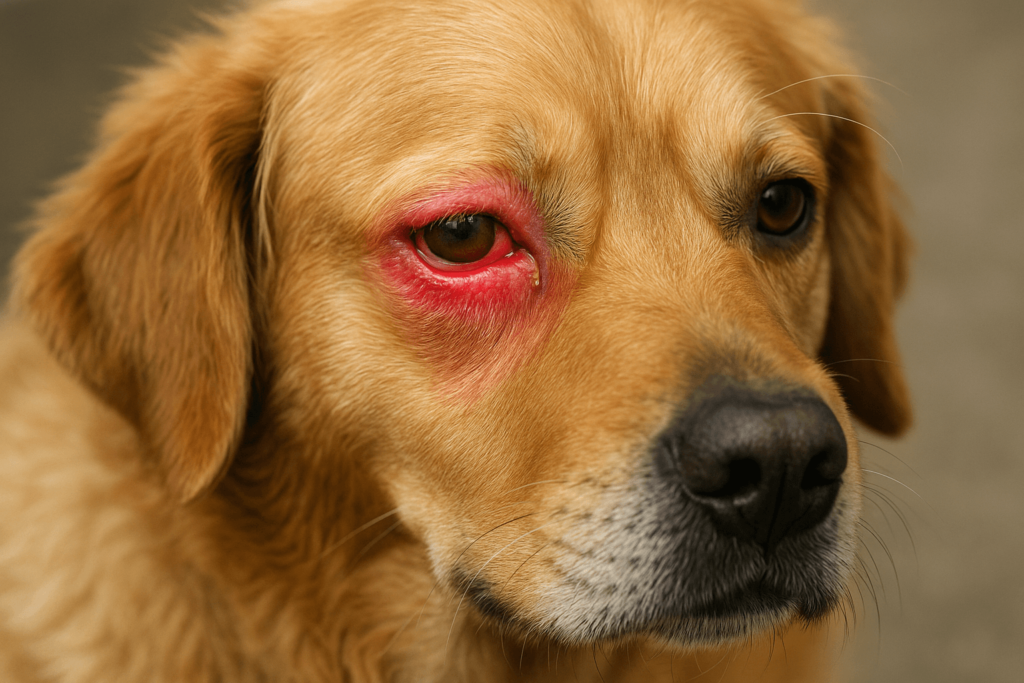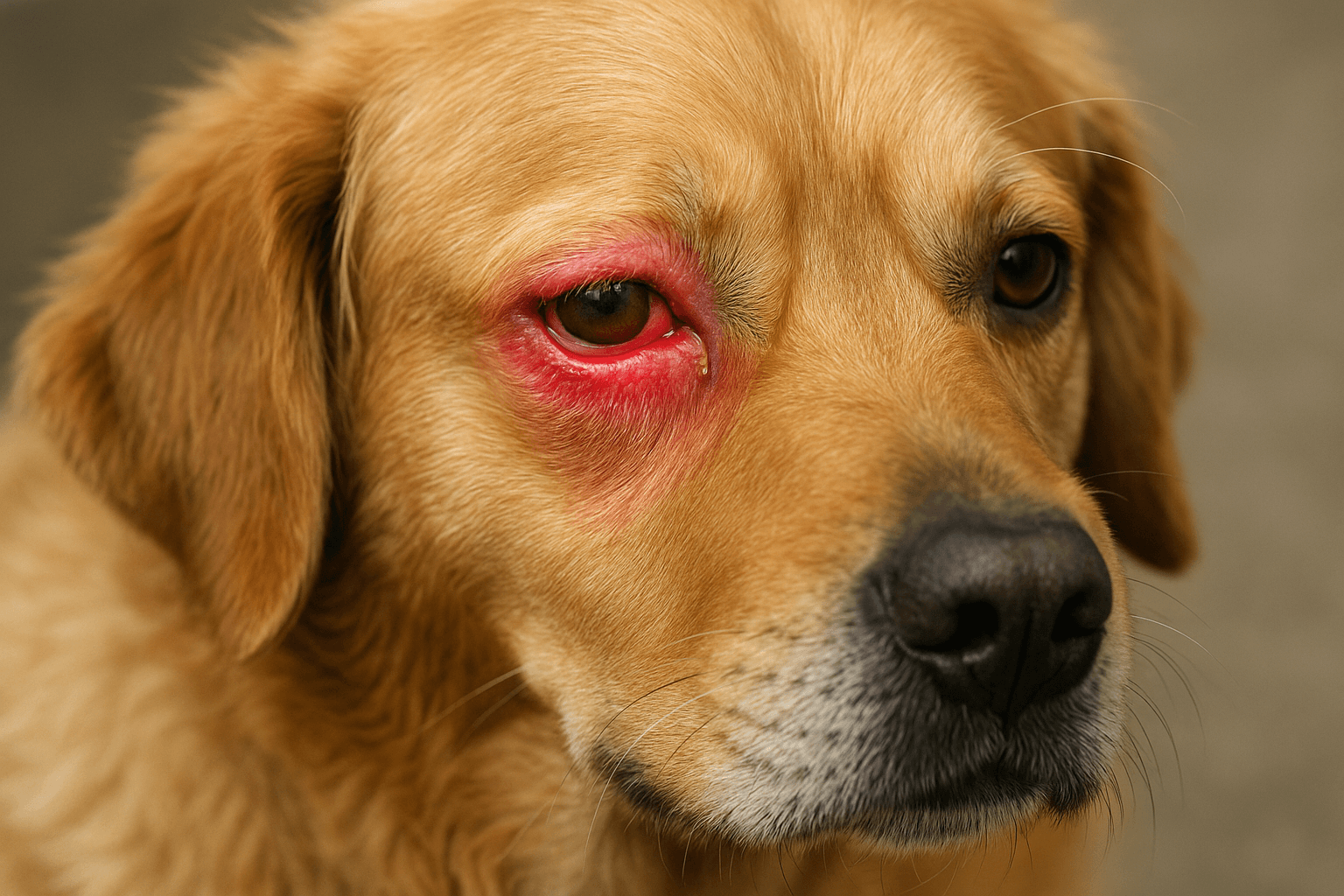Dog Eye Inflammation: Recognizing the Signs and Restoring Your Pet’s Comfort
When your dog’s eye looks red, swollen, or cloudy, it’s not just a minor irritation—it’s a warning. Eye inflammation in dogs isn’t something to ignore. It can signal everything from a simple foreign particle to a serious, vision-threatening condition. Understanding dog eye inflammation means recognizing the subtle changes in your pet’s behavior and appearance before they escalate. This guide walks you through the causes, symptoms, and solutions to help you act swiftly—and compassionately—for your dog’s eye health.
Why Dog Eye Inflammation Is More Than Just Redness
Eye inflammation in dogs isn’t cosmetic—it’s a physiological alarm. The eye is a delicate organ, and even minor swelling can disrupt vision, cause pain, or lead to permanent damage. Here’s what’s really happening when your dog’s eyes are inflamed:
The immune system activates
When irritants or pathogens enter the eye, white blood cells rush in, causing redness, heat, and swelling as part of the body’s defense.Tear production may change
Inflammation can trigger excessive tearing or, paradoxically, dryness—both compromise the eye’s natural protective barrier.Pain and discomfort are often silent
Dogs rarely cry out. Instead, they blink more, rub their face, or avoid light—subtle signs you must learn to read.Underlying conditions may be involved
Allergies, infections, autoimmune disorders, or even tumors can manifest first as eye inflammation.Delayed treatment risks vision loss
Conditions like glaucoma or corneal ulcers can progress rapidly—sometimes within hours.
Ignoring red or watery eyes isn’t patience—it’s risk. Early detection is your dog’s best defense.

Common Causes of Eye Inflammation in Dogs
Not all eye inflammation is the same. The cause determines the treatment—and the urgency. Here are the most frequent culprits behind your dog’s irritated eyes:
Allergies (Environmental or Food):
Pollens, dust, mold, or certain proteins in food can trigger histamine release, leading to itchy, swollen eyelids and watery discharge.Conjunctivitis (Pink Eye):
Bacterial, viral, or irritant-induced inflammation of the conjunctiva—the thin membrane covering the eye—is one of the most common causes.Foreign Bodies:
Grass seeds, dirt, hair, or even small twigs can lodge under the eyelid, causing constant irritation and secondary infection.Corneal Ulcers:
Scratches or abrasions on the cornea become inflamed and painful, often from running through brush, fighting, or self-trauma from scratching.Dry Eye (Keratoconjunctivitis Sicca):
A lack of tear production leaves the eye exposed, leading to chronic inflammation, thick mucus, and eventual scarring.
Each cause requires a different approach. Misdiagnosing can delay healing—or make things worse.
Check this guide 👉Dog Eye Blood Vessel Burst: Best 7 Expert Tips!
Check this guide 👉Dog Eye Blood Vessel Burst: Best 7 Expert Tips!
Check this guide 👉Understanding Dog Eye Cancer: Best 7 Expert Tips!
| Symptom | Likely Underlying Issue |
|---|---|
| Red, bloodshot whites of the eye | Conjunctivitis or allergies |
| Cloudy or bluish cornea | Corneal ulcer or edema |
| Thick yellow or green discharge | Bacterial infection |
| Excessive tearing without discharge | Irritant, tear duct blockage, or early glaucoma |
| Squinting or holding eye shut | Pain from ulcer, foreign body, or uveitis |
How to Spot Early Warning Signs Before It Gets Serious
Dogs are masters at hiding pain. By the time you notice obvious swelling, the issue may already be advanced. Learn to catch the early signals:
Frequent Blinking or Squinting
Even one extra blink per minute can indicate discomfort. Watch for rapid, involuntary blinking—especially in bright light.Rubbing Eyes with Paws or on Furniture
This is your dog’s attempt to relieve itching or pressure. If it’s constant, don’t wait.Changes in Eye Color or Clarity
A hazy, dull, or blue-tinged cornea isn’t normal. It suggests fluid buildup or scarring.Pawing at One Eye Only
Unilateral irritation often points to a foreign object, ulcer, or trauma—not allergies.Avoidance of Light or Hiding in Dark Corners
Photophobia (light sensitivity) is a classic sign of corneal damage or intraocular inflammation.
These signs aren’t optional to notice. They’re urgent. A 24-hour delay can mean the difference between recovery and permanent damage.
What You Should Never Do When Your Dog Has Inflamed Eyes
Well-meaning owners often make mistakes that worsen the condition. Avoid these common—and dangerous—errors:
Never Use Human Eye Drops
Products like Visine contain vasoconstrictors that can harm your dog’s eye or mask symptoms, delaying proper diagnosis.Don’t Wash Eyes with Tap Water
Tap water lacks the proper pH and sterility. Use saline solution only if recommended by your vet.Avoid Home Remedies Like Tea or Honey
Natural doesn’t mean safe. These can introduce bacteria or irritants into a compromised eye.Don’t Wait to See If It “Clears Up”
Many eye conditions worsen rapidly. If symptoms persist beyond 12–24 hours, see a vet.Never Try to Remove Foreign Objects Yourself
You risk scratching the cornea further. Let a professional handle it with proper tools and sedation if needed.
Your instinct to help is good—but only informed action saves vision.
Diagnosis: What the Veterinarian Will Check
A vet doesn’t guess—they test. Here’s what a professional evaluation typically includes:
Schirmer Tear Test
Measures tear production to rule out dry eye—a silent but common cause of chronic inflammation.Fluorescein Stain
A harmless dye is applied to detect corneal ulcers or scratches that aren’t visible to the naked eye.Intraocular Pressure Test
Checks for glaucoma, which causes painful pressure buildup inside the eye.Swab for Culture
If discharge is present, a sample may be taken to identify bacterial or fungal infection.Bloodwork or Allergy Panel
To rule out systemic diseases like autoimmune disorders or hypothyroidism.
Accurate diagnosis is the foundation of effective treatment. Don’t skip the vet visit—even if you think you know the cause.
Treatment Options Based on the Cause
Treatment isn’t one-size-fits-all. The right solution depends entirely on the root problem:
Allergies:
Antihistamines, steroid eye drops (prescription), or allergen avoidance. Long-term management may require dietary changes.Bacterial Conjunctivitis:
Antibiotic ointments or drops, often combined with cleaning the eye area twice daily.Corneal Ulcers:
Medicated drops to promote healing, an Elizabethan collar to prevent rubbing, and sometimes surgery for deep ulcers.Dry Eye (KCS):
Cyclosporine or tacrolimus eye drops to stimulate tear production. Lifelong treatment is often needed.Foreign Body Removal:
Performed under sedation with specialized tools. Follow-up antibiotics prevent infection.Uveitis or Autoimmune Conditions:
Oral steroids or immunosuppressants, along with anti-inflammatory eye drops.
Always follow your vet’s instructions precisely—even if your dog seems better before the course is finished.
Preventing Future Eye Inflammation in Your Dog
Prevention is far easier—and cheaper—than treatment. Here’s how to protect your dog’s eyes long-term:
Trim Hair Around the Eyes
Long fur can irritate the cornea or trap debris. Keep the area clean and clipped, especially in long-haired breeds.Use a Dog-Safe Eye Wipe
Gently clean away discharge or dust daily with vet-recommended wipes.Avoid High-Risk Environments
Keep your dog away from tall grass, dusty fields, or areas with sharp branches during walks.Regular Vet Checkups
Annual eye exams catch early signs of cataracts, glaucoma, or dry eye before symptoms appear.Protect During Wind or Car Rides
Use dog goggles or keep windows partially closed to prevent debris from hitting the eyes.
Prevention isn’t about overprotecting—it’s about respecting your dog’s vulnerability.
FAQ: Dog Eye Inflammation
Can dog eye inflammation go away on its own?
Sometimes mild cases caused by temporary irritants may improve, but most require treatment. Waiting risks permanent damage.
Is dog eye inflammation contagious to humans?
Rarely. Bacterial conjunctivitis from dogs can rarely transfer to humans, but it’s uncommon. Practice good hygiene when handling the eyes.
Why does my dog only have one inflamed eye?
Unilateral inflammation often means trauma, a foreign object, or localized infection—not allergies, which usually affect both eyes.
How long does it take for dog eye inflammation to heal?
Mild cases (allergies or minor irritation) improve in 3–7 days. Ulcers or infections may take 1–3 weeks. Chronic conditions require ongoing care.
Can diet affect my dog’s eye health?
Yes. Omega-3 fatty acids (from fish oil) reduce inflammation. Deficiencies in taurine or vitamin A can contribute to eye problems.
Respect Their Eyes—They Can’t Tell You What Hurts
Your dog’s eyes are windows to their inner world—and to their health. When they flare with redness or cloudiness, it’s not just a symptom. It’s a plea. A silent message: I’m in pain. I need you.
You don’t need to be a veterinarian to recognize the signs. You just need to pay attention. To notice the squint. To see the paw. To feel the urgency in their quiet behavior.
Canned Pumpkin for Cat Diarrhea: Best 7 Expert Tips! Natural remedy to firm stools, soothe upset bellies, and support gut health safely.
Can a Cat Give You Scabies? Best 7 Expert Tips! Discover the truth about feline mites, human skin risks, and how to protect yourself—without panic.
Cat Flea vs Human Flea: Best 7 Expert Tips! Discover the truth about bites, species, and how to eliminate infestations for good.
Weird Cat Behaviors: Best 7 Expert Tips! Discover why cats do strange things—and how to understand, not punish, their instincts for a happier home.





